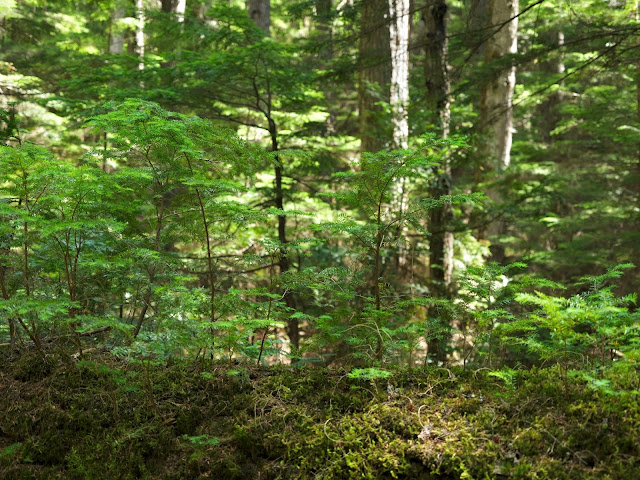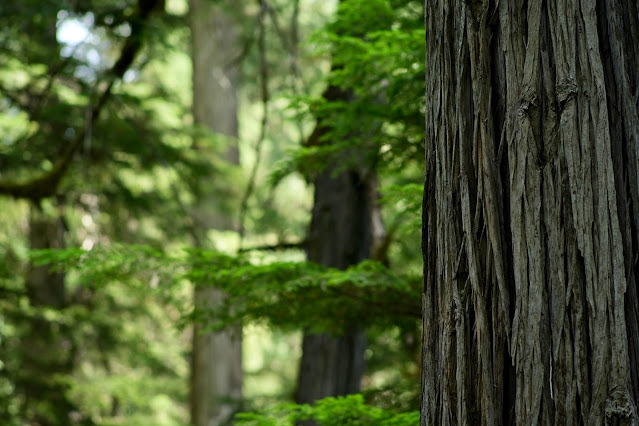Upper Priest River Trail (Digital)
I continue on my Northern Idaho Digital series. My apologies to my Analog followers but as I am in the complicated process of moving andI have opted for the simpler (and cheaper) alternative of shooting digital for now. To recap I have a Fujifilm GFX 50s II and which I try and shoot in an ‘analog manner’. That is I try and do as many things as manually as possible. I also have adapted a small range of medium format Mamiya 645 lenses and also some 35mm lenses such as the Olympus 135mm f2.8. So my focus is manual as are my exposure settings. I live with a single fixed white balance. (I actually think auto white balance wastes more time than it saves. It never seems right and can often take away the color of the natural light.) Some earlier posts described my evolving experience with digital as an analog guy.
Because of my circumstances I don’t have a PC and so rely only on the iPad native photo editing which has a pretty cramped range of exposure and brightness settings.
I set out in the morning for the Upper Priest River Trail. It is about 80 miles from Sandpoint ending on well graded Forest Service roads. The trail itself is over 17 miles long round trip and I was certainly not up for that long a hike.
I arrived and put on bug spray, packed my bear spray (best to do it that way as the reverse is more painful though probably better at keeping the bugs away. ) and some water and snacks along with my camera equipment.
The trail plunges immediately into old-growth forest as it parallels Priest River. The sound of the river was a constant companion during the walk. Dominated by large red cedar and hemlock trees even in warm dry August it feels lush and green under the canopy. The trail has bridges where it needs to cross streams and wet areas and is relatively level even as it ascends with the rise of the stream bed.
The forest is strikingly silent. There are few bird calls, the trees and soft forest floor deaden any sounds and almost seem to absorb one thoughts. A lot of the time I kept my camera packed away and enjoyed the silence and solitude letting my mind absorb the calm and quiet.
This is grizzly bear country like most of Idaho’s back country and I have not yet gauged the level of awareness I should expect to have for this threat. The consequence is I am always looking around which is not much different from walking and taking photos but it does have a different intent. I am better calibrating my anxiety though especially in relatively well travelled areas.
Encounters I suppose are rare and all one can do is be prepared. It occurred to me there are worse places to die, and I will be well marinaded in hot sauce for the bear’s epicurean delight. The directions on the bear spray indicate the effective distance which I have to admit I would not be sure I could judge under the circumstances I would expect to use the spray. I decided the instructions should be amended to recommend that if you smell your own shit the bears is close enough to start spraying.
On the way up I used the Fuji GFX 35-70mm f4.5-5.6 kit lens as that was what was on the camera. For me it works best when focussed manually as I can be sure the subject is in focus and the depth of field is right as I compose. Here are my selected few. (I was much better disciplined in taking fewer images this day.)
One tip for shooting in the forest like this is I tend to adjust the exposure up to one stop darker on the exposure compensation dial. The metering seems to blow out bright highlights in this high contrast area. A little less exposure can help immeasurably. The shadows are easier to recover in post than blown highlights where all information is lost.
 |
| A Hemlock with the lush forest floor at its base. |
 |
| Old growth red cedar abound here. |
 |
| The first of two images of a nursery log hosting dozens of hemlock seedlings. |
 |
| Another view of the nursery log. |
 |
| The trail runs past a large cedar. |
 |
| A glimpse of the Upper Priest River |
 |
| A young big leaf maple |
I chose an arbitrary time to return after about 2 hours out. The trail passes through sections with fantastic large old-growth cedars.
I have always had a kind of romance with the red cedar. The are distinctive and have so many uses to the tribes of the Pacific Northwest. The wood resists rot and is fashioned into boxes, masks, ‘totem’ poles, canoes, and lodges. Often times the planks used to make the lodges and boxes would be cut and split from living trees meaning they continued living long after.
Seeing these grand old treed renewed my love of them.
On the return I switched to my Olympus 135mm f2.8 lens. This gives a much tighter perspective owing to the length of the lens and the 35mm crop I set the camera for. This meant I would not duplicate any shots on the same trail back. Here are these results.
 |
| The trail an bright sunlit forest. |
 |
| The cacophony of boughs |
 |
| Vine maple. |
 |
| Vine maple (again!) |
 |
| Cedar bark |
 |
| A glimpse into the woodland. |
 |
| Vine maple. |

Comments